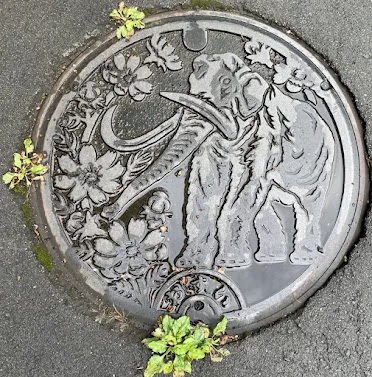 Two years ago, the BBC said Japan was the future, but it's now stuck in the past. I agree.
Two years ago, the BBC said Japan was the future, but it's now stuck in the past. I agree.
- Among the detractions is ownership of real estate. You buy a home, and after paying off your mortgage in, say, 40 years, it is worth almost nothing.
- Japan recently had the third-largest economy, is a peaceful and prosperous country with the longest life expectancy in the world, the lowest murder rate, little political conflict, a powerful passport, and the sublime Shinkansen, the world's best high-speed rail network. Actually, about GDP and the economy, Germany has slipped past Japan into #3, with India in the next few months easing by Japan.
- When the author of this article, Rupert Wingield-Hayes, first arrived in Tokyo in 1993, a third of a century ago, he was effusive about the country being exquisitely clean and orderly. Actually still is.
- But he noted that Hong Kong was an assault on senses and Taipei had horrible air pollution.
- He could have said the same about Bangkok.
- Ambitious parents around the world implored their offspring to "learn Japanese."
- This was already two years after the Japanese bubble had burst and the Tokyo stock market had collapsed. 36 years later, the Nikkei has still not recovered.
- In 1989, the Nikkei 225 was at 38,916.
- The Nikkei 225 is today at 35,039.
- Real wages haven't grown in 30 years. Incomes in South Korea and Taiwan have overtaken Japan.
- Cited is that Japan has a fascination for manhole covers. They are all works of art, and each costs up to $900. There are 6,000 different designs. And, incidentally, the Osaka Expo has it's own design.
- The country needs international workers, but they maintain tight immigration controls.
- The foreign ministry is skeptical and fearful of the outside world.
- Only about 3% of the population is foreign-born. In the UK it is 15%, and the USA is today approaching 16%
- A third of the Japanese people are over 60. By 2050 it will lose 20% of its current population.
- Men rule, for only 13% of business managers are female, while Diet representation is less than 10%.
- Japan has become modern without abandoning the ancient.
- You need to understand the recent history to understand why Japan is Japan.
- In 1868 the samurai surrendered their swords, cut their hair, put on Western suits and began to run the government. Their ilk is still there today.
- In 1868, they saw how Western imperialists took over China.
- This something they wished not to be repeated in Japan, so they got rid of the Tokugawa Shogunate and set Japan on a course of high-speed industrialization. This was the Meiji Restoration.
- Their position on World Wars one and two is that they were threatened by the Western World, and had to take precautions.
- The same party has essentially run the country for nearly 150 years.
- I reach further back. In 1979 I read Japan as Number One: Lessons for America, by Ezra Vogel. It still stands as the all-time best seller in Japan of non-fiction by a Western author.
- But ten years later, Japan's economy began to fray, as was indicated above, the Nikkei was at 38,916.
- Accounting for inflation, if there were ZERO growth, the Nikkei should now be 168,000,
- However, yesterday, it was only 35,039.
- This is a point missed by analysts. To reach and exceed the past stock market peak, the Nikkei must get up to 168,000, not wallow in the 30,000s.
- On 11March2011 came the crusher: The Great Tohoku Earthquake and Tsunami. The worst part was the Fukushima nuclear disaster. Just this cleanup cost will exceed ONE TRILLION DOLLARS.
So how can Japan regain it's world ranking, soon to be #5, back to at least #3, if not regain the promise it showed in 1979 to strive towards #1?
- Honestly? Forget it.
- Japan has the 11th largest world population, which will continue to drop because of a declining birth rate. Vietnam is #16, and will surge past Japan by 2050.
- In 1990, Japan was #1 in the world production of vehicles, 13.5 million to 9.8 million of #2 USA. Last year? China #1 with 31.3 million, USA at #2 with 10.6 million, and Japan at #3 with 8.2 million. Japan's annual vehicle output dropped by 5.3 million in a third of a century.
- They will be saddled with the Fukuoka nuclear problem into the 2050's.
- They have 33 nuclear reactors, with three more under construction, and 26 in the process of decommissioning.
- Many of the above nuclear powerplants are in seismically active areas.
- They have minimal prospects for land-based renewable energy, not much left in any fossil fuel and a growing dependence on other countries to power the economy.
- UK is #6, France #7, Italy #8, Canada #9 and Brazil #10 in GDP. Just remaining in #5 should be fine,
- Consideration can be given to allowing more foreigners into the country with work visas.
- Expand job potential by having more women work in meaningful jobs.
- Japan is surrounded by oceans. In 2011 I wrote a HuffPo: The Blue Revolution is the Optimal Solution for Japan.
- Land is limited. The seas are there for free.
- Japan ranks #3 to China and South Korea in shipbuilding.
- They can re-energize this industry by building floating platforms for the Blue Revolution.
- This new marine economy could provide green fuels, next generation fisheries and a range of other economic opportunities, while remediating global warming and preventing the formation of typhoons.
- For details on the Blue Revolution, watch my 18-minute TEDx talk given in December 2022.
-






















Comments
Post a Comment